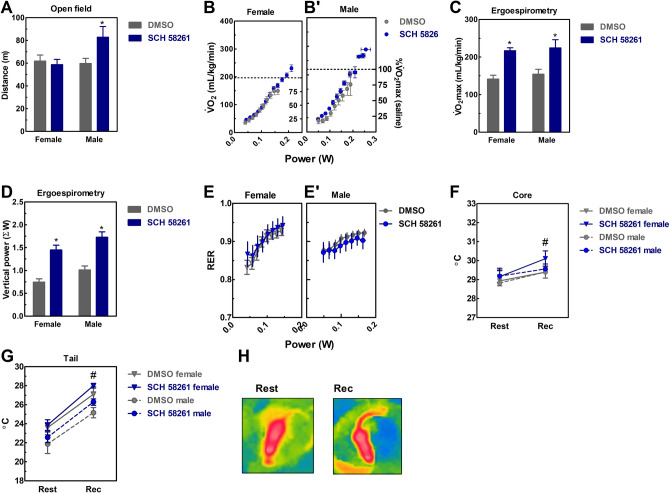Figure 1.
Effects of SCH 58261 (1 mg/kg, i.p.) on locomotion (A), ergospirometry (B–E), and thermoregulation (F–H) of wild type male and female mice. (A) SCH 58261 was psychostimulant only in males. (B) The dotted line represents the V̇O2max of the DMSO group. Ergospirometry increased V̇O2 (B), running power (B), and metabolic rate (E) until the animals reached fatigue. SCH 58261 was ergogenic in both sexes, as it increased V̇O2max (C) and running power (D). The animals presented exercise-induced core and tail hyperthermia (H), which was not 58261 modified by SCH (F–G). Sex was a significant factor in decreasing maximum responses to V̇O2 (C) and running power (D), and increasing core and tail temperature in females. Data are presented as mean ± SEM. N = 8–9 animals/group for 12 independent experiments. *P < 0.05 vs. DMSO (Two-way ANOVA followed by Newman-Keuls post hoc test). # P < 0.05 vs. rest (Repeated measures ANOVA followed by Bonferroni post hoc test). DMSO dimethyl sulfoxide. Rec recovery. RER Respiratory Exchange Ratio. V̇O2 oxygen consumption.

